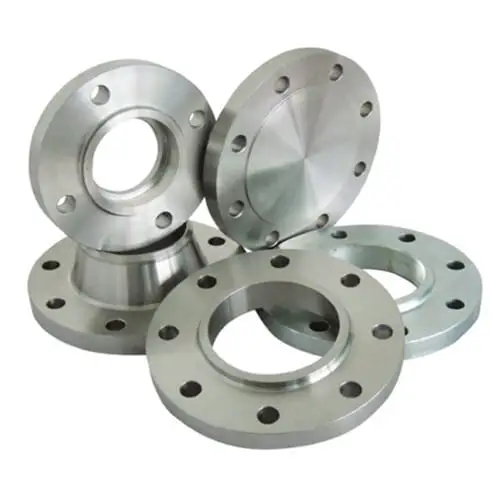Know Different Types of Flanges

Flanges aren’t a one-size-fits-all item. Aside from sizing, selecting the appropriate flange design for your piping system and intended use will ensure efficient operation, long life, and the best price. Flanges are available in a variety of shapes and sizes, as illustrated below.
Slip-On – Slip-on Flanges are slipped over the pipe and then welded both inside and outside to provide adequate strength and prevent leakage. These flanges can have a raised or flat face. They work best in low-pressure situations. Slip-on flanges, also known as “Hubbed Flanges,” are distinguished by their slim and compact design.
Socket Weld – The pipe is inserted into the flange and then the connection is secured with a single multi-pass fillet weld on these flanges. Socket weld flanges have only one fillet weld on the outside and are frequently not recommended for critical applications. This type of flange is required for low-pressure pipes with small diameters.
Blind – Blind flanges are typically used to seal the end of a pipe or its opening, and thus have no more. These flanges allow easy access to the pipe if work needs to be done inside the line. Such flanges are frequently used to obstruct an unnecessary section of pipe or nozzle on a vessel.
Weld Neck – Butt welding is required during the installation of this type of flange. They are welded to the end of a pipe to form a flange capable of withstanding high temperatures and pressure. The weld neck flange has a “neck” that can move the pipe tension, reducing strain in the flange’s lower part.
Threaded / Screwed – This design features a thread inside the flange bore (female thread) that connects to the pipe or fitting’s matching male thread. Despite its ease of use, this flange is not suitable for high pressure or temperature applications. The threaded flange’s main advantage is that it can be installed without the use of welding.
Lap Joint – Lap joint flanges are two-piece in design, requiring butt welding the stub end to the pipe or fitting and then using a backing flange to complete the flanged connection. Because of their low pressure holding capacity, they are used in low-pressure and non-critical applications.
Spectacle – This flange is shaped like a spectacle (a pair of glasses); two metal discs are joined together by a metal portion to form the flange. When a piece of equipment or a section of the line must be inspected or removed from service, spectacle blind flanges are used as a safety device to separate the equipment or line.
Plate – Because of their shape, these flanges are also known as flat flanges because they have a flat even surface with a full face gasket that contacts the majority of the flange surface. Flat face flanges are commonly used when the mating flange or flanged fitting is cast.
Reducing – Reducing flanges are a type of flange that is commonly used on projects that require the joining of pipes of different sizes. It consists of a flange with a single diameter and a bore with a smaller diameter. When turbulence changes unexpectedly, the use of such flanges is avoided.
Tongue & Groove – These flanges have matching grooves and raised sections. They benefit from this by being self-aligning and acting as an elastic buffer.
Visit: https://www.piyush-steel.com/stainless-steel-flanges-supplier-manufacturer.html
